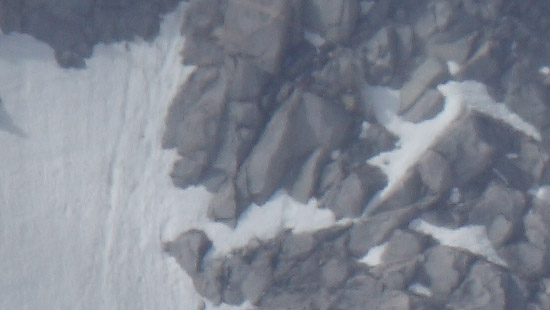EXCERPT page containing first few paragraphs. 2024-04-19 06:19:46
UA_SEARCH_BOT_compatible_botmozilla/5.0 applewebkit/537.36 (khtml, like gecko; compatible; claudebot/1.0; +claudebot@anthropic.com) @ 3.144.96.159
For full access, subscribe here. Or click title to login. ![]()
Blur from Haze and Refraction
Haze from moisture or dust obscures detail, and smog or smoke can turn a blue sky gray or brown. It is not so much blur as it is low contrast and color, but since it impairs distant detail, it must be considered a form of blurring.
Another type of blur which seems very surprising and strange if one has not previously observed it, is refractive blur — blur caused by varying air density e.g., “blobs of blur” almost like someone has finger-painted the image, smearing it.
Example — haze
Haze is a challenge with long telephoto lenses, even at relatively modest distances. Landscape photography with a long telephoto can be frustrating with even modest amounts of haze, even when the accommodating human eye perceives a relatively crisp scene. Blue light is especially troublesome, because many lens coatings and optics perform less well than with other colors of light.
Article continues for subscribers...
Diglloyd Making Sharp Images is by yearly subscription. Subscribe now for about 13 cents a day ($50/year).
BEST DEAL: get full access to ALL 8 PUBLICATIONS for only about 75 cents a day!
Diglloyd Making Sharp Images articulates years of best practices and how-to, painstakingly learned over a decade of camera and lens evaluation.
Save yourself those years of trial and error by jump-starting your photographic technical execution when making the image. The best lens or camera is handicapped if the photographer fails to master perfect shot discipline. High-resolution digital cameras are unforgiving of errors, at least if one wants the best possible results.
- Eases into photographic challenges with an introductory section.
- Covers aspects of digital sensor technology that relate to getting the best image quality.
- Technique section discusses every aspect of making a sharp image handheld or on a tripod.
- Depth of field and how to bypass depth of field limitations via focus stacking.
- Optical aberrations: what they are, what they look like, and what to do about them.
- MTF, field curvature, focus shift: insight into the limitations of lab tests and why imaging performance is far more complex than it appears.
- Optical aberrations: what they are, what they look like, and what to do about them.
- How to test a lens for a “bad sample”.
Intrigued? See Focusing Zeiss DSLR Lenses For Peak Performance, PART ONE: The Challenges, or (one topic of many) field curvature.


Canon 800mm f/5.6L IS

